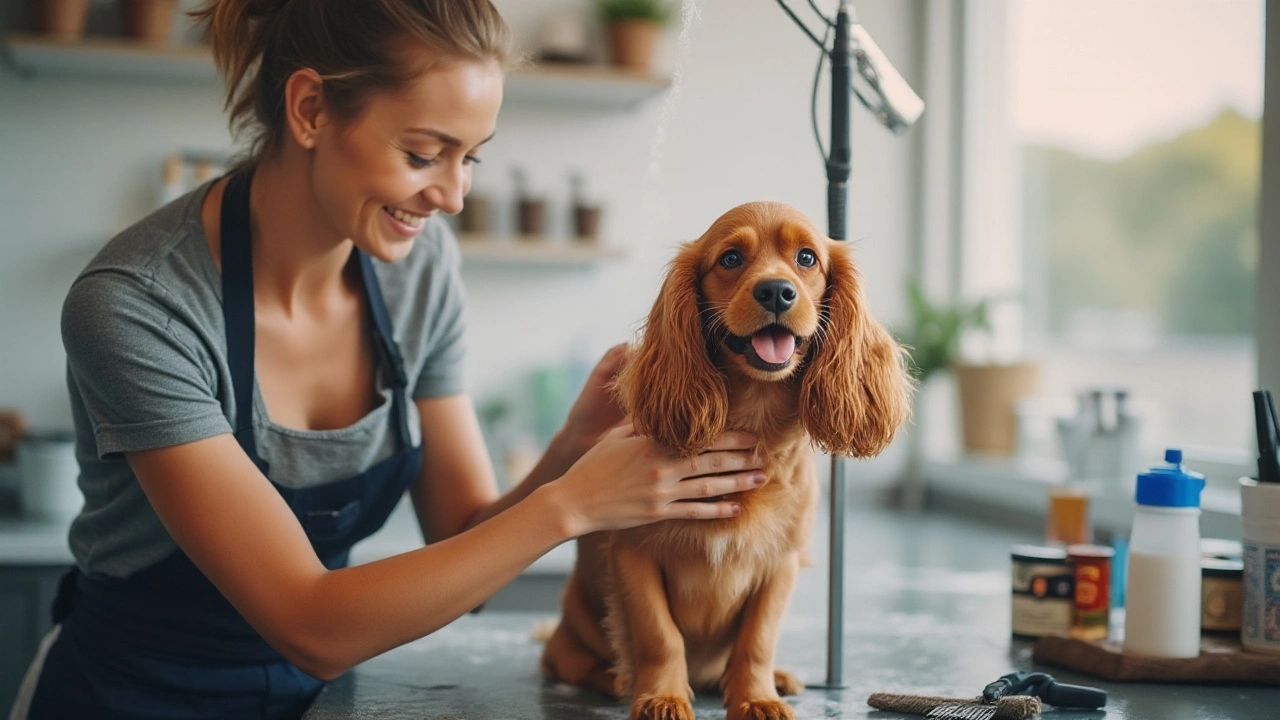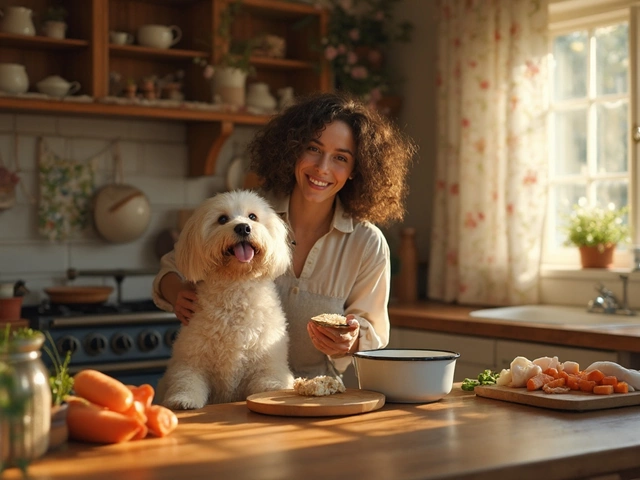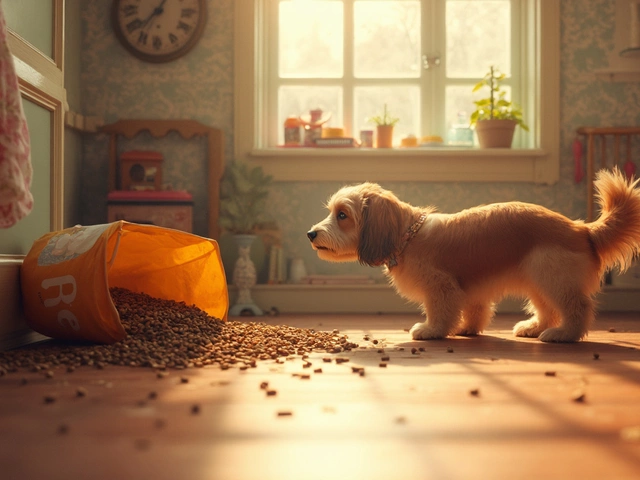When it comes to dog grooming, there's a common question that often surfaces among pet owners: do groomers wash or cut first? Understanding the process that professional groomers follow can demystify it for many dog owners, providing them peace of mind knowing that their pets are in good hands.
Every grooming session aims to make your dog look and feel its best, but effectively achieving that often depends on the order of operations. Whether washing precedes cutting or vice versa can be influenced by several factors, including the breed of the dog, coat condition, and the specific services requested.
In the following sections, we'll explore how groomers often decide the best course of action, the advantages of maintaining a proper sequence, and offer some tips that can help you prepare your pup for their next visit to the grooming salon. Armed with this knowledge, you’ll be better equipped to ensure that your furry friend enjoys a pleasant grooming experience each time!
- Grooming Order: Wash or Cut?
- Factors Influencing Grooming Steps
- Benefits of Proper Grooming Sequence
- Tips for Preparing Your Dog for Grooming
- Choosing the Right Grooming Service
Grooming Order: Wash or Cut?
Deciphering whether professional dog groomers should cut or wash first is a query that's almost as old as the practice itself. The answer, however, is not set in stone and often varies based on a multitude of factors. Understanding this process can help pet owners appreciate the artistry and care involved in dog grooming. The order can impact not just the final look of your pet but also the efficiency and safety of the grooming session.
Generally, most groomers prefer to wash a dog before cutting its hair or trimming its nails. The primary reason for this approach is simple – cleanliness. Washing a dog first ensures that any dirt, dead hair, or debris is removed from the coat, making it easier for the groomer to run clippers smoothly without snagging or causing discomfort to the animal. A clean dog also allows the groomer to see the natural fall of the fur, which is important for achieving neat, even cuts.
However, there are exceptions to this rule. With certain breeds or heavily matted dogs, a pre-bath trim, known as a 'rough cut,' might be necessary. Removing some of the bulk makes the washing and drying process more effective. This is especially true in breeds with dense undercoats like Huskies or Malamutes, where an initial cut can help the shampoo and water penetrate down to the skin. Kari Harendorf, a well-known canine expert, once noted,
"The health of a dog's coat begins with effective preparation — be it cutting before bathing for matted breeds or bathing first for those with longer, silkier fur."
In instances where a dog is particularly nervous or unused to the grooming process, different strategies might apply. Some groomers may elect to wash dogs first to calm them down with the warm water, helping make the rest of the process less stressful. As meticulous practitioners, groomers often assess the dog's temperament and coat condition before deciding the best grooming path. The choice between washing or cutting first is less about a rigid rule and more about ensuring each dog is treated according to its unique needs, making grooming not just an aesthetic service but a deeply personalized pet care conduit.
For owners curious about the intricacies of pet care during grooming, understanding the wash-or-cut conundrum also provides insight into the skills required behind every session. Next time you drop your furry friend for grooming, watching them go through this structured, thoughtful sequence can be a testament to the care and expertise demanded of groomers daily.
Factors Influencing Grooming Steps
Dog groomers have a lot on their plate when it comes to deciding the best approach for each dog, and the sequence of washing and cutting is no exception. Many factors come into play, influencing whether a groomer chooses to wash a dog before cutting its fur or vice versa. One of the primary considerations is the breed of the dog and the type of coat it has. For instance, breeds with double coats like Golden Retrievers might require a different approach compared to those with single coats like Poodles.
Another key factor is the condition of the dog’s coat upon arrival at the grooming salon. If the dog's fur is heavily matted, a preliminary cut might be necessary before a bath, as water can actually tighten mats, making them harder to remove. Conversely, for dogs with a healthy, untangled coat, a bath first might be the best option to clean the fur thoroughly before any cutting takes place. This helps in avoiding any uneven cuts caused by grime or dirt interfering with the grooming equipment.
Health and Safety Considerations
Health and safety play a crucial role in determining the grooming steps as well. Groomers must consider any skin sensitivities or dermatological concerns that could be aggravated by washing. Moreover, some dogs may be better behaved during different stages of the grooming process. For nervous or anxious dogs, it might be beneficial to start with a soothing bath to relax them before moving on to the potentially more stressful experience of clipping.
Additionally, the specific requests from the pet owner can influence the decision. Some may prefer a specific style that necessitates certain grooming methods or techniques. Groomers must balance their professional judgement with the expectations and desires of the pet's owner, ensuring that the end result meets both aesthetic and comfort standards.
“The most important thing is the pet's safety and comfort. Our processes adapt to the animal's needs and the owner's wishes,” shared Emily Stevens, a professional dog groomer with over 15 years of experience in handling a variety of breeds.
Environmental and Equipment Factors
The availability and condition of grooming equipment might also dictate whether washing or cutting comes first. High-quality tools are essential for achieving a precise groom, but sometimes, equipment maintenance or availability issues can drive the decision-making process. In salons that are particularly busy, workflow efficiency can also be a factor, ensuring that equipment isn't double-booked or overused. The cleanliness and state of the grooming area can be easier to maintain when baths precede cuts, as it minimizes shedding hair during the washing step.
Knowing these factors can help dog owners understand why their groomer takes a certain approach. It's about tailoring the dog grooming experience to each pet’s unique needs, ensuring their safety, comfort, and a beautiful outcome. A bespoke grooming session makes all the difference, helping our furry friends stay healthy and happy!
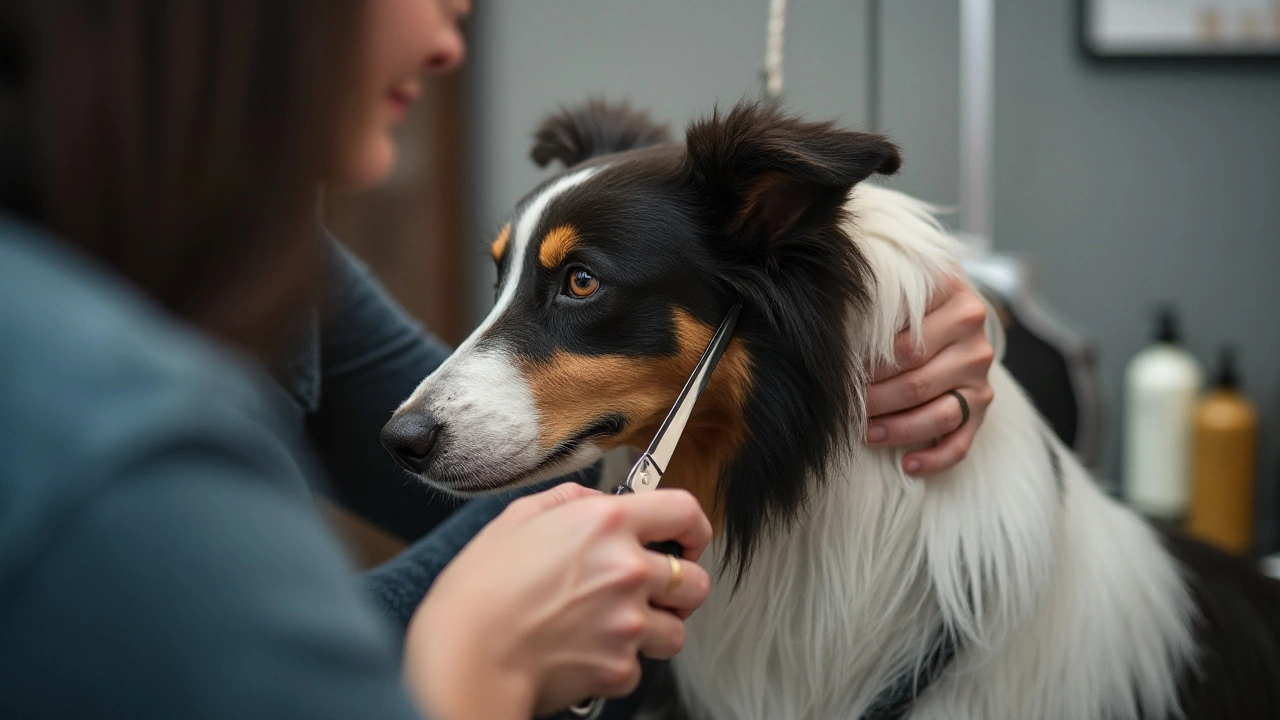
Benefits of Proper Grooming Sequence
Every dog owner wishes for their canine companion to look as spiffy and elegant as possible after a grooming session. However, achieving this desired outcome isn't just about using the right tools or products; there's a lot to be said about the order in which grooming tasks are performed. A proper grooming sequence—whether to wash or cut first—can greatly influence not only the efficiency of the grooming process but also its impact on your pet's comfort and the final results.
To start, washing a dog before cutting their hair can sometimes be beneficial because it helps to remove any dirt, loose hair, and debris that could potentially clog or dull grooming shears. Imagine trying to work with muddy fur—it's not ideal. Clean fur allows for smoother and more precise cuts, making it easier to enhance the breed-specific style or the pet owner's preferred look. It also gives you a better understanding of the texture and length you’re working with, as sometimes dirt can cause the hair to appear denser or matted than it really is.
On the flipside, in certain cases and with some dog breeds, especially those with thicker coats or where a substantial cutting is required, preliminary trimming might be advised before a bath. Cutting before washing can reduce bulk, making the washing process less unwieldy and allowing water and shampoos to penetrate the coat more effectively. This is especially true for breeds like Newfoundlands or Old English Sheepdogs, whose thick and heavy fur may retain water, making the drying process cumbersome post-wash if not trimmed beforehand.
Moreover, adhering to a proper sequence can significantly minimize stress for the dog. Some pups aren't fans of being bathed or don't enjoy the sound and feeling of electric clippers. Strategically planning the grooming sequence to ease them into the process can help. That might mean starting with a relaxing bath for nervous dogs, using calming lavender-scented shampoos, so the grooming process becomes associated with a soothing experience. Conversely, if a dog is particularly anxious about washing, a quick trim beforehand can get them accustomed to being handled before the more involved bath is attempted.
Highlighting professional insights, a seasoned groomer once said,
"The art of dog grooming goes beyond just aesthetics. It's about creating an environment where each animal feels safe and comfortable, so they always look forward to it."This philosophy underlines the importance of the grooming sequence as a means to cater not only to the dog's hygienic needs but their emotional wellbeing as well.
Tips for Preparing Your Dog for Grooming
Preparing your furry friend for a grooming session is like setting the stage for a successful performance. A bit of preparation goes a long way in ensuring the experience is pleasant for both the dog and the groomer. The first step is to get your dog accustomed to being handled all over. This might mean gently touching their paws, ears, and tail to familiarize them with different sensations. Consistency is key, so routinely spending time each day to run your hands over your dog's body can reduce their anxiety during the grooming session.
Another vital aspect is exercise. Before the grooming appointment, ensure that your dog expends some energy. A short walk or play session can help calm them down, making them less likely to be restless on the grooming table. Grooming can be a stressful experience for some dogs, and a bit of exercise can make a big difference in their demeanor. Consider this simple trick: a tired dog is often more cooperative.
Training your dog to enjoy bath time can also be extremely beneficial. Using treats and positive reinforcement while slowly introducing them to water and bath tools can help turn a potentially stressful situation into a pleasant one. It's important to use a non-slip mat in your home bathtub to provide your pet with more security. By creating a positive link with bathing at home, your dog might be less anxious when professionally groomed.
It's crucial to consider your dog's diet and hydration leading up to the grooming appointment. Well-fed and hydrated pets are often more relaxed. Always remember to bring your dog's favorite toy or a comforting item to the grooming session. It might sound simple, but familiar smells can have a calming effect on your dog. As the saying goes, "comfort is key."
As noted by the American Kennel Club, "ensuring steady grooming routines from an early age can help solidify a dog's positive association with the experience."
Lastly, communicate with your groomer. If your dog has any special needs or behavioral quirks, letting the groomer know ahead of time can facilitate a smoother session for everyone involved. Dogs rely heavily on a sense of routine, so establishing a consistent grooming schedule can provide them with a sense of familiarity and predictability, reducing their stress levels.
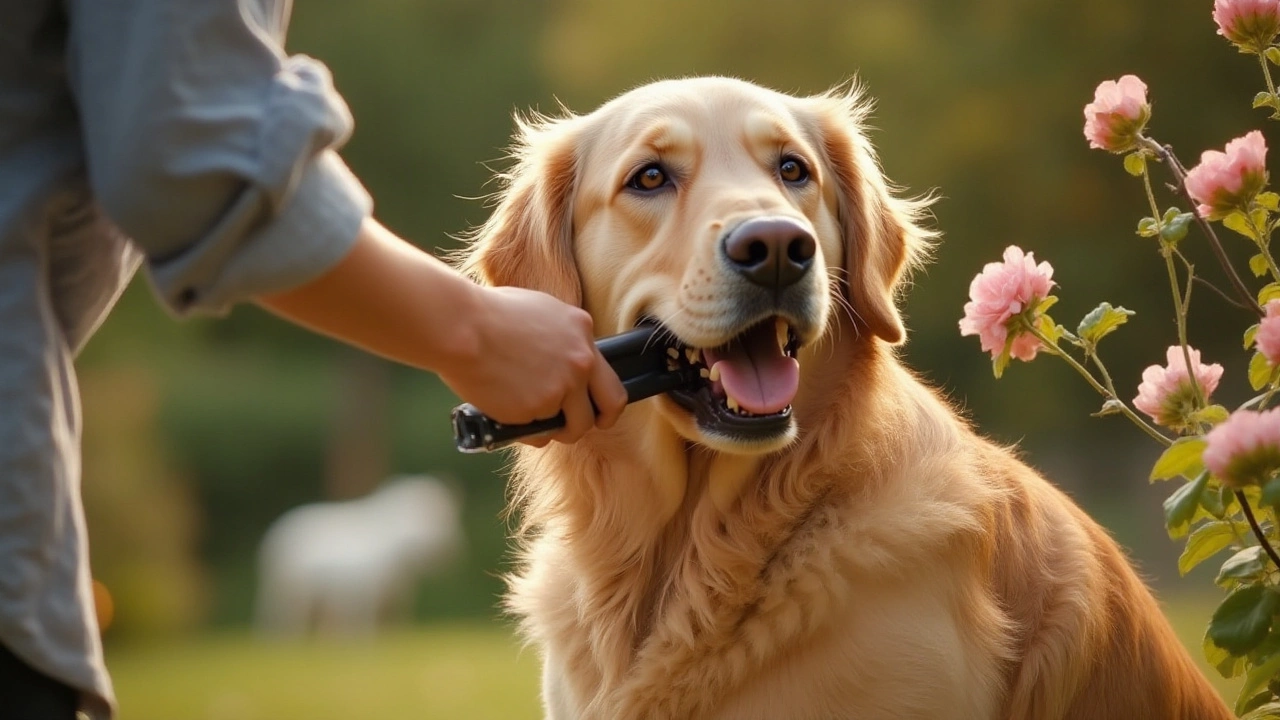
Choosing the Right Grooming Service
Finding the perfect grooming service for your pet involves more than a quick search online; it requires a thoughtful consideration of several key factors. Every dog groomer offers different services, approaches, and levels of experience, so it's crucial to choose one that meets your dog's specific needs and your expectations. Start by researching professional groomers in your area who specialize in your dog's breed. This ensures they are familiar with the unique grooming requirements your dog might have, whether it’s a delicate Havanese or a robust Labrador.
Next, consider the reputation of the grooming service. Reviews from other pet owners can offer invaluable insights into the reliability and quality of the service provided. Keep an eye out for comments regarding the facility's cleanliness, how well the groomers communicate with pet owners, and how comfortable the dogs seem in their care. Visit the salon if possible; seeing the environment first-hand can help you assess whether it’s a place where your pet would feel at ease.
It’s also worth inquiring about the groomer's qualifications and experience. Some groomers have certifications from respected institutions, which can add an extra layer of assurance regarding their expertise. Ask about their approach to handling stressed or anxious dogs, and whether they offer any special services for them. As the Royal Society for the Prevention of Cruelty to Animals (RSPCA) often emphasizes:
"Ensuring your pet is groomed by a professional means choosing someone who not only knows how to make them look good, but also reassure and care for them during the process."
Pricing is another important consideration, but remember to evaluate it in the context of the services provided. A cheap service could suggest corners being cut, potentially at the expense of your dog’s safety or comfort, while expensive isn’t always synonymous with quality. Look for a grooming service that provides a balanced combination of value and quality. Understand the range of services included in your grooming package. Basic services usually cover dog grooming steps like washing, drying, and cutting, while others might offer additional treatments such as nail trimming or ear cleaning.
Finally, communication is key. A great groomer will keep you informed about your dog's condition during pick-up or drop-off, highlighting any skin issues or health concerns they notice. Such conscientiousness not only demonstrates professionalism but also shows their genuine care for your pet. When you establish a good rapport with a pet groomer, you’re forming a partnership for ongoing pet care. With thoughtful consideration, you can find a grooming service that both you and your dog will appreciate time and again.

